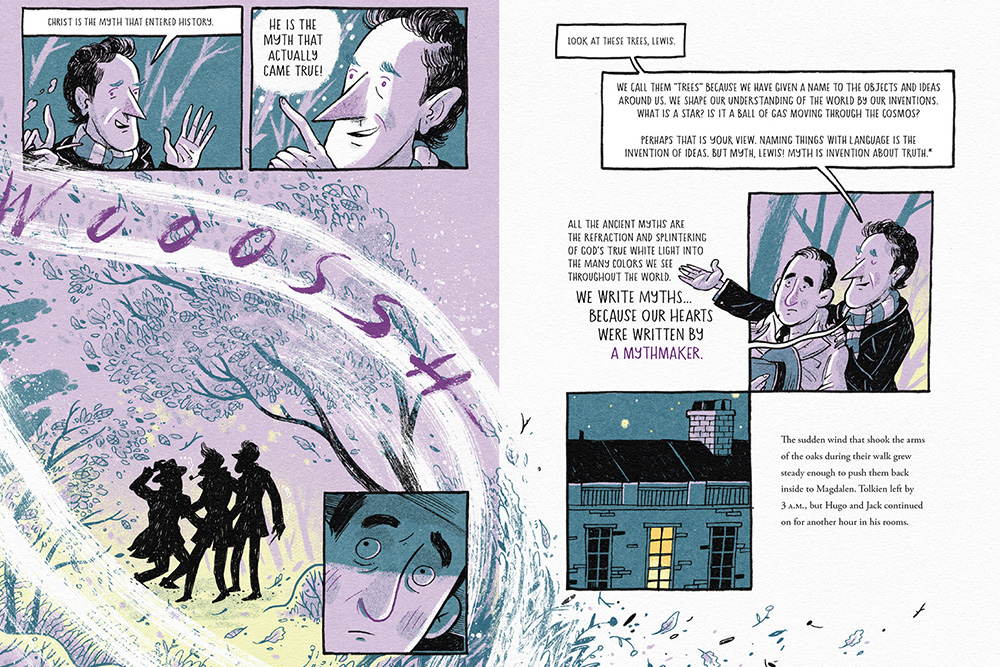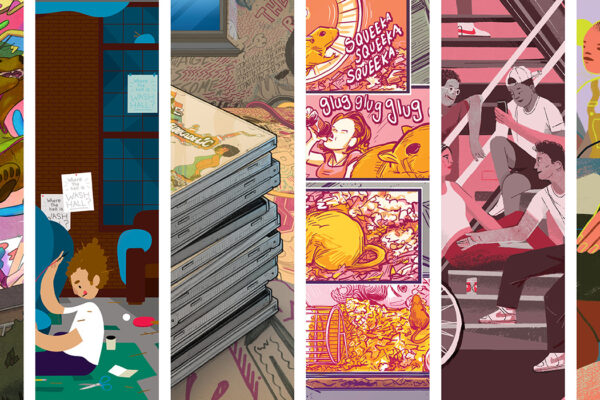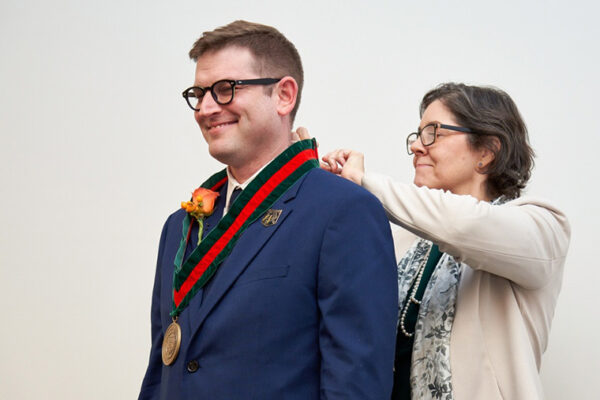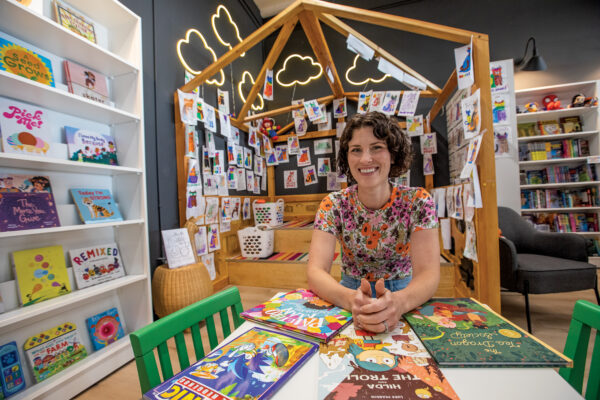“The writings of C.S. Lewis and J.R.R. Tolkien illuminated my childhood like the sun.”

So writes John Hendrix, the Kenneth E. Hudson Professor of Art in the Sam Fox School of Design & Visual Arts, in the notes of The MythMakers: The Remarkable Fellowship of C.S. Lewis and J.R.R. Tolkien (Abrams Fanfare, 2024). In graphic storytelling form, Hendrix delivers 200-plus pages of illustration, musings, biography and mythic retelling of the friendship and collaboration of two of the 20th century’s greatest literary giants.
The relationship of Lewis & Tolkien, or Jack and Tollers as they were known to each other, is well documented. Even casual fans of The Lion, the Witch and the Wardrobe or The Hobbit may know the story of the legendary Addison’s Walk at Oxford University, where a deep conversation about God and man and myth and legend sparked a lifetime of work for both men. But Hendrix takes their story, a friendship that Hendrix calls both a triumph and a tragedy, to a whole new level.
“I think of this as a nonfiction book with artistic license,” says Hendrix, who admits in the author’s notes that he’s expecting there to be “a certain segment of reader that will throw the book across the room with objections to my abridged adaptation.”
But through careful, annotated scholarship, Hendrix recreates conversations that are documented to have taken place and adds illustration, discourse and context — with an occasional bit of whimsy. “What I did was fill in the details of the stuff we don’t know,” he says. “It’s a little fantastical in that I give them words that maybe they would have said, although no one else was there to hear it. This gives the reader a chance to be that fly on the wall.”
Through the cartoon characters of a lion and a wizard, who serve as witnesses and narrators, Hendrix illustrates the life story of that friendship. With Lion and Wizard narrating, readers can imagine what it might have been like to stroll Addison’s Walk; or have tea in Lewis’ study or a drink at the Eagle and Child; or attend a gathering of the Inklings, the literary social club of Oxford scholars in the 1930s and ’40s.
“I wanted to recreate the feelings of being inside their stories,” Hendrix says. “This book had to be a quest, because all their books are quests. So Lion and Wizard act as the avatars for Tolkien and Lewis. It’s supposed to mimic the feeling of the classic arc of a fairy tale, but inside of it is their biographical story.”
And in doing so, Hendrix throws in lessons on the art of storytelling, explaining the literary nuances of myth, legend and fairy tale. In fact, Tolkien explaining that difference to Lewis that night on Addison’s Walk was the spark Lewis needed to reconcile his deepest beliefs so he could blossom into his own as a writer.
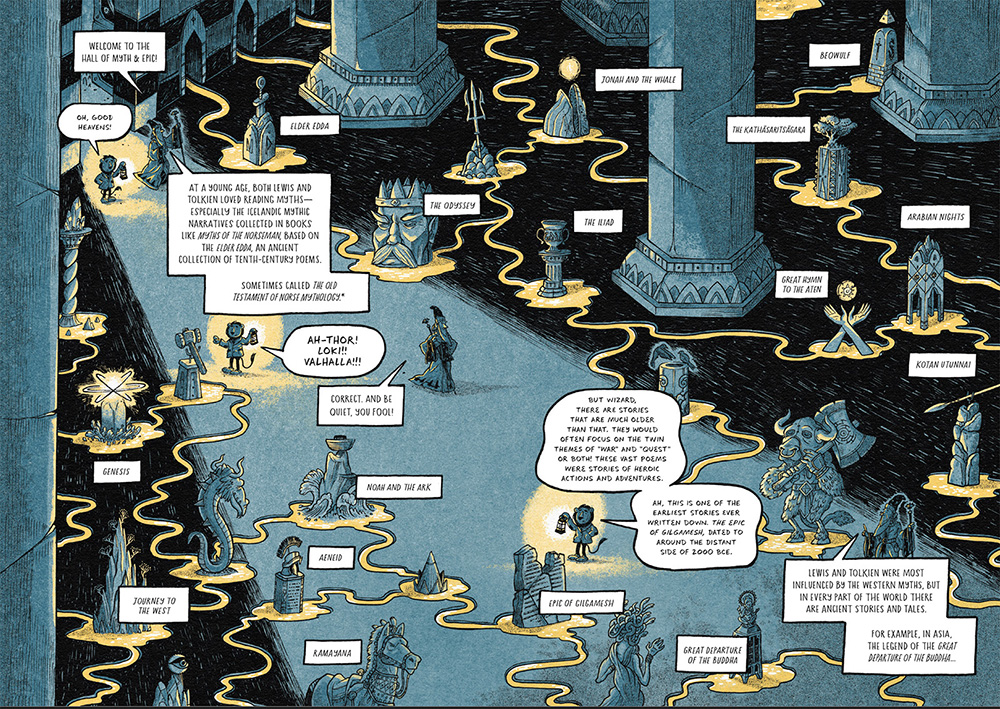
“I feel a kinship with them in a lot of ways,” says Hendrix, who is also the founding chair of the Sam Fox School’s MFA in Illustration & Visual Culture program. “I’m a university professor in my 40s. They were in their 40s when they accidentally re-enchanted the world. They flipped a coin at the Eagle and Child and dared each other to write fiction for adults that was fantastical. It was not their intent to become two of the bestselling authors of the 20th century. It’s insane that their little hobby turned out to sell millions of books around the world.”
Hendrix, who remembers being about 10 or 11 when he first read Tolkien’s The Hobbit, says he became both an avid reader of fantasy and a passionate fan of illustrated stories because of that book. It’s clear he has great affection for the two friends who pushed each other to greatness. It’s that affection that brings The Mythmakers to an emotional, unexpected climax. Not going to give it away, but readers may want to have a box of tissues on hand.
“Jack and Tollers’ truly extraordinary act was not just their ideas but their community,” Hendrix writes. “They pushed each other forward when the demands of plumbing or faculty meetings encroached. If there is one thing to take away from this story, it is a radical notion of fellowship that runs counter to the cultural stereotypes about ‘loner artists.’
“J.R.R. Tolkien and C.S. Lewis teach us that your art, your stories, your ideas, they get better inside a community.”
